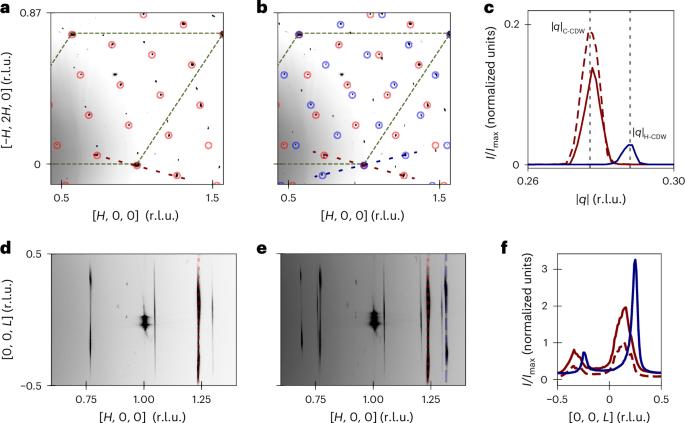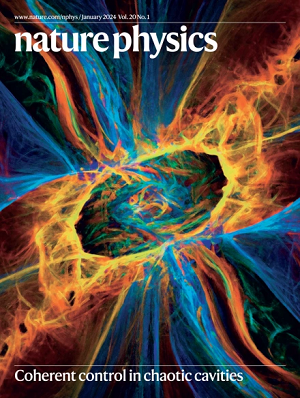Dynamic phase transition in 1T-TaS2 via a thermal quench
IF 18.4
1区 物理与天体物理
Q1 PHYSICS, MULTIDISCIPLINARY
引用次数: 0
Abstract
Ultrafast light–matter interaction has emerged as a mechanism to control the macroscopic properties of quantum materials. However, technological applications of photoinduced phases are limited by their ultrashort lifetimes and the low temperatures required for their stabilization. One such phase is the hidden metallic charge density wave state in 1T-TaS2, whose origin and stability above cryogenic temperatures remain the subject of debate. Here, we demonstrate that this phase can be stabilized at thermal equilibrium by accessing a mixed charge density wave order regime through thermal quenching. Using X-ray high-dynamic-range reciprocal space mapping and scanning tunnelling spectroscopy, we reveal the coexistence of commensurate charge density wave and hidden metallic charge density wave domains up to 210 K. Our findings show that each order parameter breaks basal plane mirror symmetry with different chiral orientations and induces out-of-plane unit cell tripling in the hidden phase. Despite metallic domain walls and a finite density of states, the bulk resistance remains insulating due to charge density wave stacking disorder. Our results establish the hidden state as a thermally stable phase and introduce an alternative mechanism for switchable metallic behaviour in thin flakes of 1T-TaS2 and similar materials with competing phases. The photoinduced hidden metallic state in 1T-TaS2 has so far been stabilized only at cryogenic temperatures. Now it is shown that accessing an additional mixed-phase long-lived metastable state can stabilize the hidden phase at higher temperatures.

热淬火后1T-TaS2的动态相变
超快光-物质相互作用已成为控制量子材料宏观性质的一种机制。然而,光诱导相的技术应用受到其超短寿命和稳定所需的低温的限制。其中一个相是1T-TaS2中隐藏的金属电荷密度波态,其起源和在低温以上的稳定性仍然是争论的主题。在这里,我们证明了该相可以通过热淬火进入混合电荷密度波阶状态来稳定在热平衡状态。利用x射线高动态范围互易空间映射和扫描隧道光谱,我们揭示了在210 K范围内存在相称电荷密度波和隐藏金属电荷密度波域。我们的研究结果表明,每一阶参数都以不同的手性取向打破了基面镜像对称,并在隐藏相中诱发了面外单元胞的三倍化。尽管存在金属畴壁和有限密度的态,但由于电荷密度波堆积无序,体电阻仍然保持绝缘。我们的研究结果将隐藏态确定为热稳定相,并为具有竞争相的1T-TaS2薄片和类似材料的可切换金属行为引入了另一种机制。
本文章由计算机程序翻译,如有差异,请以英文原文为准。
求助全文
约1分钟内获得全文
求助全文
来源期刊

Nature Physics
物理-物理:综合
CiteScore
30.40
自引率
2.00%
发文量
349
审稿时长
4-8 weeks
期刊介绍:
Nature Physics is dedicated to publishing top-tier original research in physics with a fair and rigorous review process. It provides high visibility and access to a broad readership, maintaining high standards in copy editing and production, ensuring rapid publication, and maintaining independence from academic societies and other vested interests.
The journal presents two main research paper formats: Letters and Articles. Alongside primary research, Nature Physics serves as a central source for valuable information within the physics community through Review Articles, News & Views, Research Highlights covering crucial developments across the physics literature, Commentaries, Book Reviews, and Correspondence.
 求助内容:
求助内容: 应助结果提醒方式:
应助结果提醒方式:


